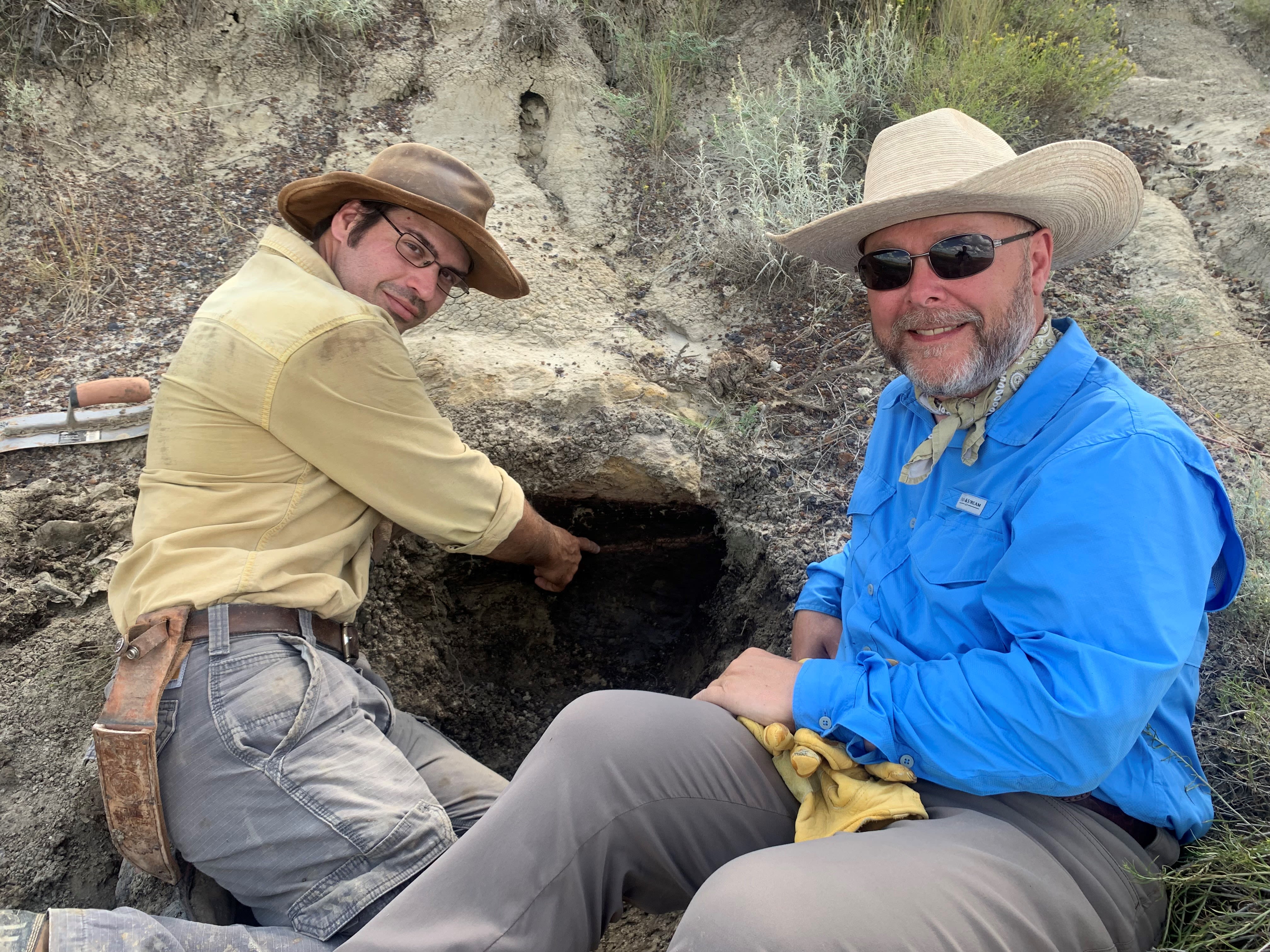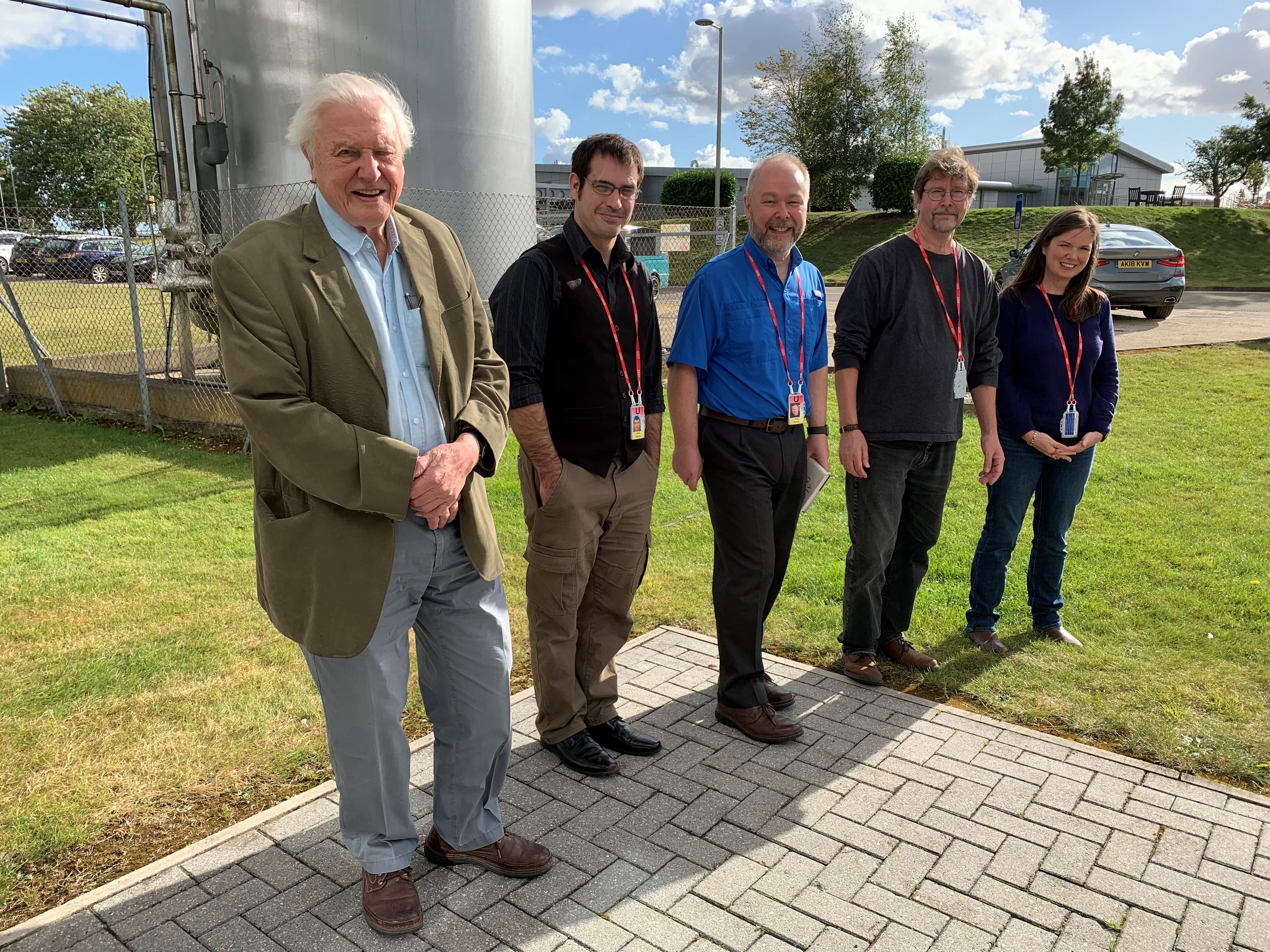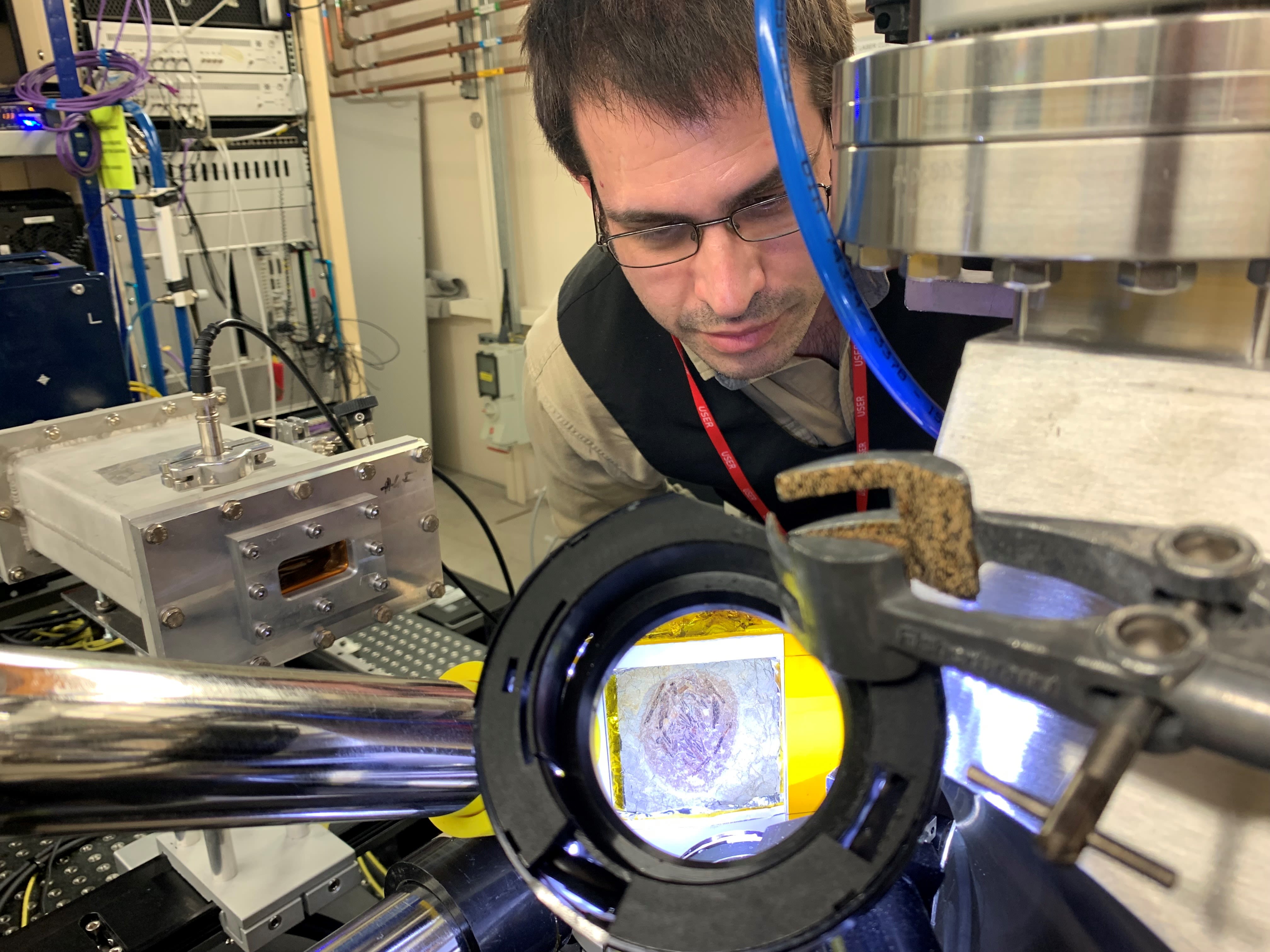Shedding light on the final days of dinosaurs
By studying prehistoric fossils with powerful imaging techniques at Diamond Light Source, researchers were able to gain remarkable insights into the chemistry of the Earth following the asteroid strike that marked the end of the reign of dinosaurs.
Scientists, using powerful imaging techniques at Diamond Light Source (Diamond), have made ground-breaking discoveries that could provide the first ever physical evidence that dinosaurs were killed by an asteroid strike at the end of the Cretaceous.
After the meteorite hit Earth, the dust settled into a sediment layer containing microscopic fragments of the meteorite. Researchers from Manchester University collected fossil samples from a site in North Dakota, USA, where this layer was recently discovered. They studied these using technology at Diamond, the UK’s national synchrotron, which harnesses the power of electrons to produce an intense beam of light that can be used like a giant microscope to study molecules in incredibly fine detail.

Robert Depalma (University of Manchester PhD student) and Professor Phil Manning in the field. Robert is pointing to the KPg boundary at the Tanis Site (North Dakota) that records the remarkable events on the last day of the dinosaurs some 66.1 million years ago. Credit: University of Manchester
Robert Depalma (University of Manchester PhD student) and Professor Phil Manning in the field. Robert is pointing to the KPg boundary at the Tanis Site (North Dakota) that records the remarkable events on the last day of the dinosaurs some 66.1 million years ago. Credit: University of Manchester
“By placing a fossil in the beam and collecting masses of data, it is possible to see what elements were present in the fossil and where. This helps researchers to understand the biological and chemical processes that were occurring 66 million years ago,” says Professor Andrew Harrison, CEO of Diamond.
The chemicals in the samples can reveal detail about Earth’s chemistry at the time of the meteorite impact. Studying the chemistry in this way helps scientists understand the environmental changes that happened as a result of the impact, providing more insight into how the mass extinction progressed.

From left to right - Sir David Attenborough, Robert Depalma, Professor Phil Manning, Professor Roy Wogelius and Dr Victoria Egerton. Credit: University of Manchester
From left to right - Sir David Attenborough, Robert Depalma, Professor Phil Manning, Professor Roy Wogelius and Dr Victoria Egerton. Credit: University of Manchester
The exciting discoveries – which included the fossilised leg of a small, herbivorous dinosaur that may have witnessed the cataclysmic impact and pterosaur egg containing an embryo inside – featured in a documentary with Sir David Attenborough, Dinosaurs: The Final Day with David Attenborough.
Image: Robert Depalma (University of Manchester PhD student) placing the embryonic pterosaur on DLS i18 to scan. Credit: University of Manchester
